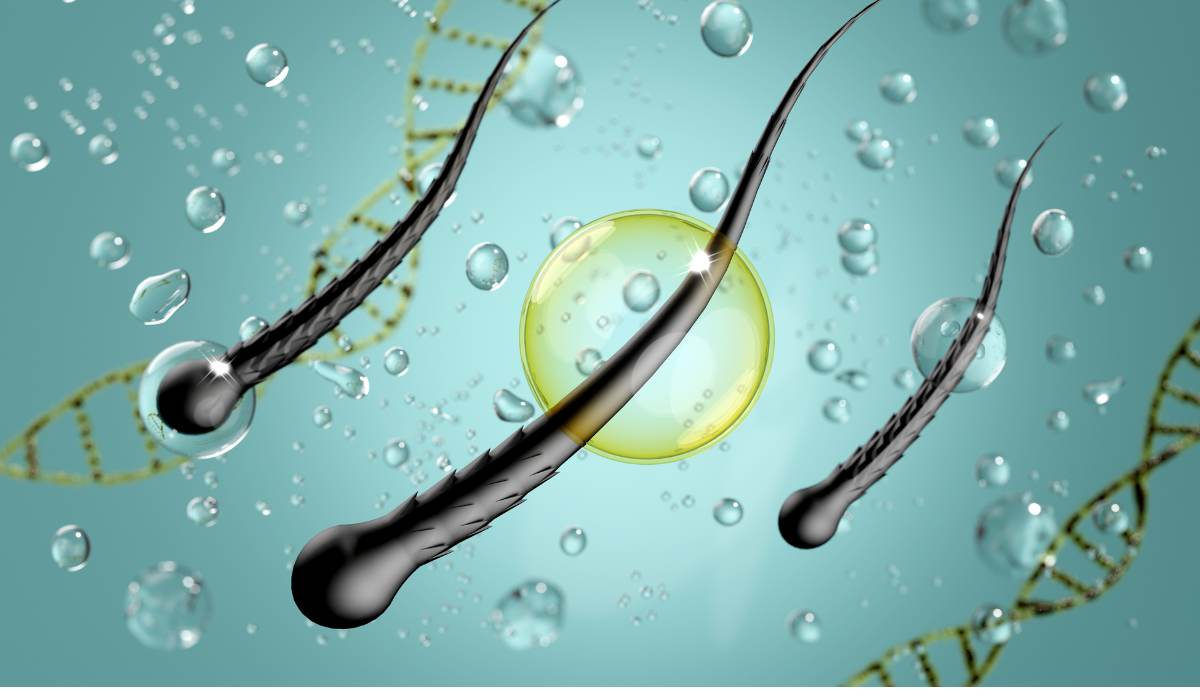Grow Hair Faster with These 7 Natural Ingredients That Actually Work
Ever feel like you’ve tried everything to grow your hair and nothing works?
Same here. My hair’s always been on the thin side, and in some spots you can actually see my scalp. It’s not something I love talking about, but I know I’m not the only one dealing with this.
I’ve spent years looking into natural ways to help—partly because I’m a certified organic skincare formulator and health coach, but mostly because I just wanted something that actually worked for me.
So I’m sharing 7 natural ingredients that have either helped me personally, have solid research behind them, or have been used traditionally for hair growth. They’re all simple, easy to find, and kind to your scalp.
Let’s take a look.
1. Rosemary oil can boost growth like minoxidil
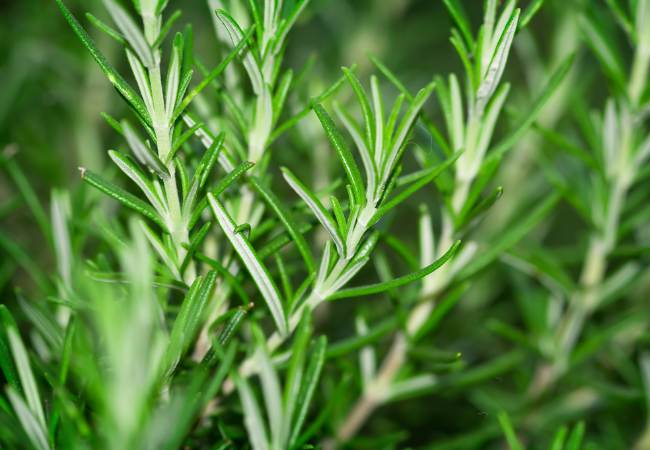
This one really surprised me when I first looked into it. There’s actual research showing rosemary oil can work just as well as minoxidil for hair growth. That’s the same active ingredient used in many commercial treatments for thinning hair.
It works by increasing circulation to the scalp, which helps nourish the hair follicles and encourage growth over time. The best part? It’s gentle, smells fresh, and doesn’t come with the same side effects that some drugstore products do.
If you’ve never tried it, it’s definitely worth a go. You don’t need much—just a little, used consistently, makes a difference.
This study published in Skinmed compared rosemary oil to 2% minoxidil in people with androgenetic alopecia. After 6 months, both groups showed significant hair growth—with rosemary performing about the same as minoxidil, but with fewer side effects like itching.
How to use it
- Add 3–4 drops of rosemary essential oil to 1 tablespoon of carrier oil (like jojoba or grapeseed)
- Gently massage into your scalp for a few minutes
- Leave it on for at least 30 minutes (or overnight if you’re comfortable)
- Wash out with a gentle shampoo
- Use 2 to 3 times a week
2. Fermented rice water can help strengthen and grow your hair
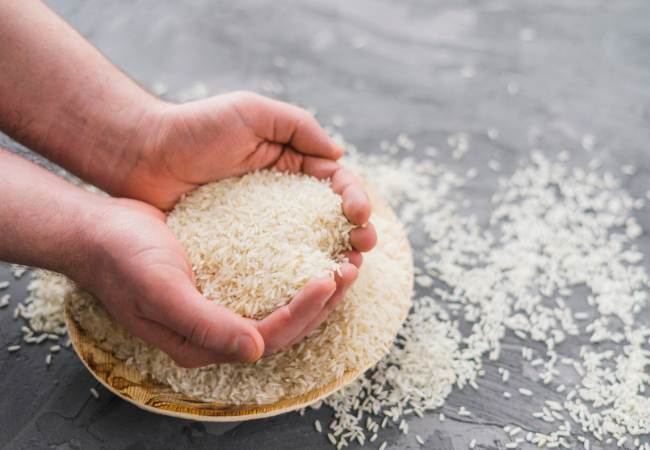
This is one of those remedies people swear by, and honestly, there’s a reason it’s been used for centuries. I wrote a dedicated article on this, check it out here “Is rice water for hair worth the hype?“
Fermented rice water is full of nutrients like amino acids, B vitamins, and a compound called inositol, which helps strengthen hair and reduce breakage.
It also makes your hair feel smoother and easier to manage, which helps if you’re dealing with thinning or fragile strands like I am.
Fermenting the rice water (just letting it sit for a day or two) makes it even more potent. It smells a bit sour, but it’s worth it.
Once you rinse it through your hair, it leaves it feeling soft and refreshed.
There’s not a ton of modern science behind it yet, here’s a scientific journal you can look at, but it’s one of those traditional treatments that’s easy, cheap, and seems to work for a lot of people.
How to use it
- Rinse ½ cup of white or brown rice to remove dirt
- Add it to 2–3 cups of water and let it sit at room temperature for 24–48 hours to ferment
- Strain the water and store it in the fridge for up to a week
- Pour over clean hair after shampooing, leave for 5–20 minutes, then rinse
- Use once or twice a week
3. Fenugreek seeds are full of protein and also helps to calm shedding
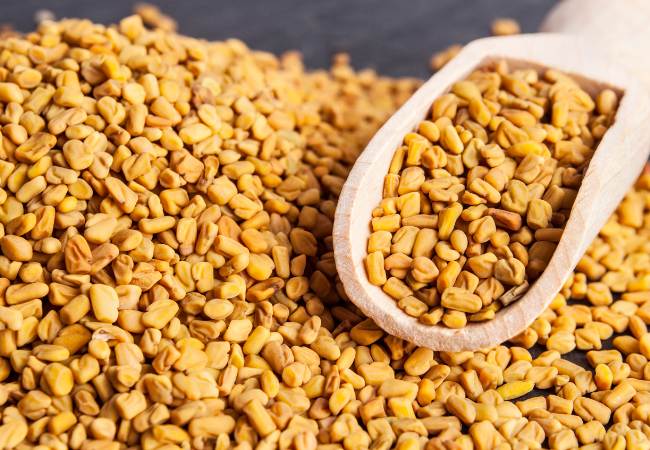
This one’s a bit messy to use, but worth trying (especially if you’re dealing with a lot of hair fall).
Fenugreek seeds are packed with protein and something called nicotinic acid, which helps strengthen your roots and calm shedding.
If you’re consistent, it can really help.
The seeds swell up when soaked and turn into a sort of slimy paste. Sounds odd, but your scalp doe love it for some reason.
You can also mix the paste with other things like aloe vera or coconut milk if you want something easier to apply.
There aren’t many big studies on it, but fenugreek is used in a lot of traditional remedies for thinning hair, and it’s easy to find in most shops.
Give it a try!
How to use it
- Soak 2–3 tablespoons of fenugreek seeds in water overnight
- Blend into a smooth paste the next morning
- Apply to your scalp and roots (not the full length unless you want to)
- Leave on for 30–40 minutes, then rinse well with lukewarm water
- Use once a week
4. Onion juice can smell a little weird but really helps with hair growth
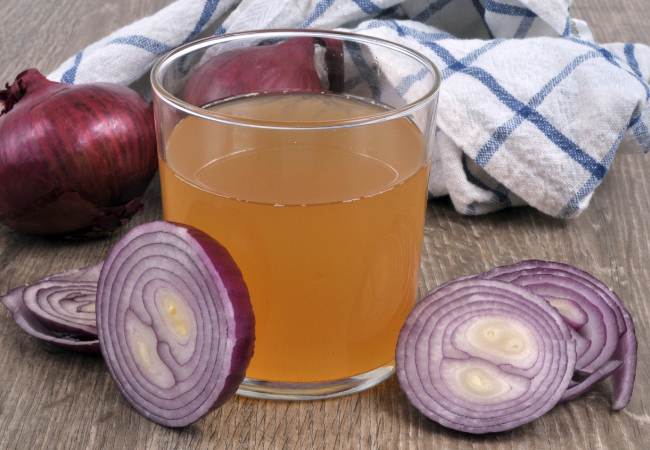
This one’s not the nicest to apply, I’ll be honest. It smells like, well… onion.
But it’s one of the few natural remedies that’s actually been looked at in studies, and it seems to help with hair regrowth in some people.
Onion juice is full of sulphur compounds, which support healthy circulation and may help with keratin production. That means stronger, thicker hair over time.
It’s best for the scalp only. You don’t want to rub this all through your lengths.
(If the smell puts you off, you can mix it with aloe vera or a few drops of a gentle essential oil like lavender).
And yes, rinse it out well.
Here’s the study where people with patchy hair loss (alopecia areata) used onion juice twice daily. After 6 weeks, 86.9% of them had noticeable regrowth. Impressive.
How to use it
- Chop up a small onion and blend or grate it
- Strain through a cloth or sieve to get the juice
- Apply just to your scalp, using fingers or a cotton pad
- Leave on for 20–30 minutes
- Wash out well with a mild shampoo
- Use 1–2 times a week
5. Aloe vera helps calm the scalp and keeps it healthy
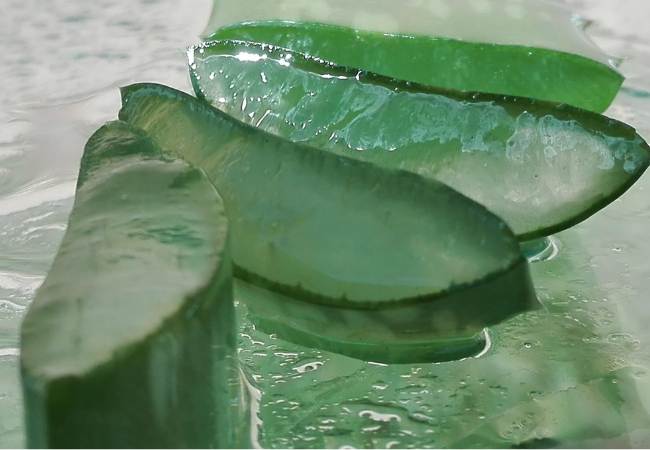
If your scalp feels irritated, itchy, or just not quite right, aloe vera is a really good place to start. I absolutely love it (and grow my own at home). Check my aloe vera for alopecia article here.
It’s naturally soothing, keeps the scalp hydrated, and helps maintain a healthy pH balance. And when your scalp is in better shape, hair tends to grow better too.
I find it works well when things feel a bit out of balance (like after a shampoo that’s too harsh or during hot weather when the scalp feels dry or tight). It’s fresh and wonderful (I also add some lavender to it, and, yes, I make my own Aloe Vera Gel).
It’s not really a “make your hair grow fast” ingredient on its own, but it does help create the right conditions for growth.
You can use the gel straight from the plant if you have one (make sure to drain the aloin or yellow sap for a few hours first), or go for a good quality store bought version (just check the ingredients, I recommend this one).
Studies and Research:
- A study published in the Journal of Dermatological Treatment found that aloe vera gel can reduce scalp inflammation and improve conditions like seborrheic dermatitis, which can contribute to hair loss. Link here.
- Another study in the Asian Journal of Pharmaceutical and Clinical Research demonstrated that aloe vera gel promotes hair growth in rats, suggesting potential benefits for human hair health. us.typology.com
How to use it
- Scoop out the gel from a fresh aloe vera leaf (or use a plain, good-quality gel)
- Apply to your scalp like a mask
- Leave on for 20–30 minutes
- Rinse out with water or a mild shampoo
- Use once or twice a week
6. Castor oil feels thick but can wake up slow-growing hair over time
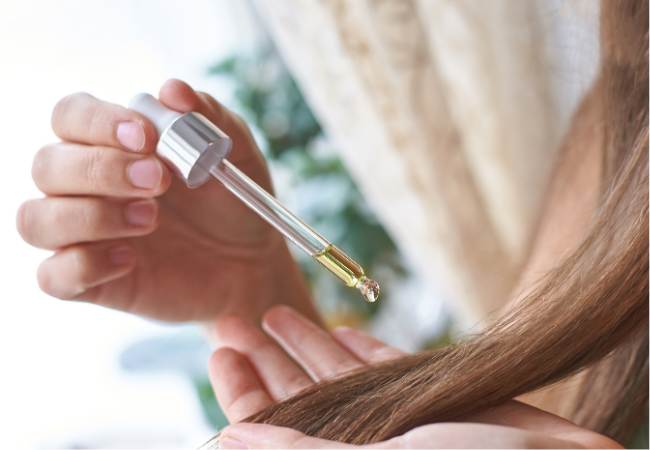
Castor oil is one of those things that people either love or avoid because it’s so thick.
It’s especially rich in something called ricinoleic acid, which is thought to support blood flow to the scalp. That means more nourishment for your follicles, so they can get on with growing (here’s my dedicated article on how to grow hair up to 3x faster with castor oil, check it out).
I wouldn’t put it all over your head unless you want to scrub for ages to wash it out.
A small amount, just massaged into the scalp and left for a while, can be enough.
Some people mix it with a lighter oil (like jojoba or argan) to make it easier to apply and rinse out. Perhaps you’d like to try that at least at first in case you find it too viscous or sticky.
There aren’t loads of human studies on castor oil for hair growth, but there’s a lot of traditional use behind it. And honestly, it’s easy to try and see how your scalp responds.
How to use it
- Take 1–2 teaspoons of castor oil (less is better to start)
- Warm slightly if it’s too thick to spread
- Massage into your scalp only — not the lengths
- Leave for 30 minutes to an hour
- Wash out with a mild shampoo (you might need to lather twice)
- Use once a week or every 10 days
7. Green tea rinses are great if you’re dealing with thinning or fallout
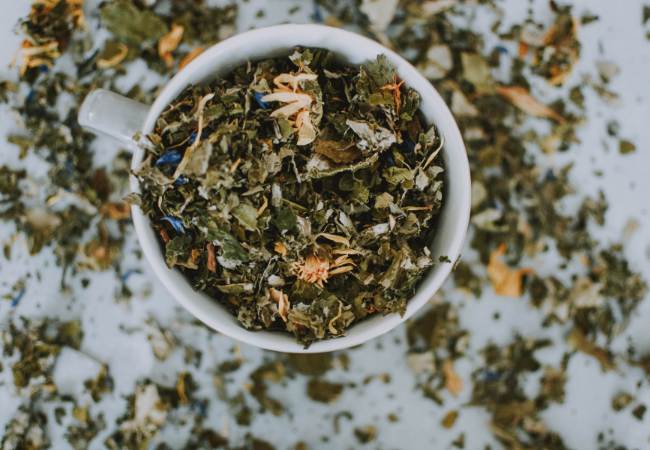
If you’ve got hair that’s thinning more than usual or falling out in handfuls, green tea might be worth a try.
It’s full of antioxidants (amazing for your skin also, particularly if…), and some of them (like EGCG, check link to studies below) are thought to help block DHT (that’s the hormone linked to hair loss).
It’s not a miracle fix, but it’s gentle, refreshing, and your scalp always will always better afterwards.
You can use it warm or cool, after shampooing, and just let it sit for a few minutes before rinsing it out.
There is a little science behind it too. Some studies suggest EGCG can encourage the growth phase of the hair cycle.
It’s nothing dramatic, but it’s one of those simple things that’s easy to try.
How to use it
- Brew 1 or 2 bags of green tea in about 2 cups of water
- Let it cool (warm is fine, just not hot)
- Pour slowly over clean hair and scalp
- Leave for 5–10 minutes, then rinse or leave it in if your scalp likes it
- Use 1–2 times a week
Here’s a study that found EGCG (from green tea) promoted hair growth in lab tests by extending the growth phase of the hair cycle.
Helpful summary
Here’s a helpful summary of how these ingredients work on your scalp and/or hair:
1. Rosemary oil (circulation and studies showing results like minoxidil)
2. Fermented rice water (protein, inositol, strength)
3. Fenugreek seeds (protein-rich, shedding support)
4. Onion juice (sulphur compounds, circulation, actual regrowth study)
5. Aloe vera (soothing, scalp health)
6. Castor oil (rich, thick, stimulates follicles)
7. Green tea rinses (antioxidants, possible DHT-blocking)
Helpful comparison table
Here’s a quick look at what each ingredient actually does, how often to use it, and what it’s best for. It’s not about doing them all — just pick what fits your hair best (below I help you even further with this).
| Ingredient | Main Benefit | Use For | Good For | How Often | Backed by Studies? | Smell/Texture Notes |
|---|---|---|---|---|---|---|
| Rosemary oil | Boosts circulation | Slow growth, thinning | Most hair types | 2–3x/week | ✅ | Herbal, fresh |
| Rice water (fermented) | Strengthens hair | Breakage, damage | Fragile hair | 1–2x/week | ⚠️ traditional | Mild sour scent |
| Fenugreek seeds | Reduces shedding | Hair fall | Dry or shedding-prone | 1x/week | ⚠️ traditional | Slimy texture |
| Onion juice | Encourages regrowth | Bald patches, thinning | Oily or dry scalps | 1–2x/week | ✅ | Strong smell |
| Aloe vera | Soothes scalp | Irritation, dryness | Sensitive scalp | 1–2x/week | ✅ | Cooling, smooth |
| Castor oil | Stimulates follicles | Slow growth | Dry or thick hair | 1x/week or less | ⚠️ traditional | Very thick |
| Green tea | May block DHT | Thinning due to hormones | Fine or oily hair | 1–2x/week | ✅ | Light, fresh |
Feeling lost? You can start here (Simple Guide)
If you’re feeling overwhelmed by all the options, this little guide might help.
You don’t need to use everything at once.
Start with one or two that match what your hair actually needs right now.
1. If you want to focus on scalp health:
- Use aloe vera and rosemary oil 2–3x a week
- Keep your shampoo gentle and avoid over-washing
2. If you’re dealing with shedding or breakage:
- Add fenugreek paste once a week
- Try fermented rice water after shampooing (1–2x/week)
3. For patchy or slow regrowth:
- Use onion juice 2x a week if you can handle the smell
- Combine with castor oil for an extra boost once a week
4. For hormone-related thinning (or oily scalp):
- Rinse with green tea 1–2x a week
- Massage in diluted rosemary oil for circulation
How long do I need to do this?
This is the part no one wants to hear—these things take time.
If you’re using natural ingredients, you won’t see results in a few days.
Hair grows slowly, and your scalp needs time to adjust.
But that doesn’t mean nothing is happening.
Here’s what to expect:
- In the first 2–3 weeks: Your scalp might feel calmer, less itchy or flaky. Hair may feel softer or a bit stronger.
- After 4–6 weeks: Some people notice a little less shedding, especially around the hairline or temples.
- After 8–12 weeks: If your scalp and follicles are responding well, you might start to see signs of regrowth or more fullness. But it’s gradual.
Can I just use one ingredient?
Yes. You absolutely can.
You don’t need to try everything. In fact, doing too much at once can irritate your scalp or make it hard to tell what’s actually working.
Here’s a good way to start:
- Pick one thing based on what’s bothering you most (like rosemary oil for slow growth, or aloe for an itchy scalp)
- Use it consistently for 4–6 weeks
- Take notes or photos if it helps you notice changes
Once you’ve done that, you can always add something else later if you feel like you need more support.
Common mistakes to avoid
If you’re giving natural remedies a go, that’s brilliant. Unfortunately lots of people stop too soon, or try to do too much at once and get frustrated.
So here are a few common mistakes I see (and yep, I’ve made most of these myself):
- Expecting results too quickly
Hair takes time. If you don’t see anything after a couple of weeks, that’s normal. Keep going. - Using way too much
Especially castor oil and essential oils — a little really does go a long way. More isn’t better. - Chopping and changing all the time
If you try five different things in the same week, it’s hard to tell what’s actually helping. - Not being consistent
Using something once and then forgetting for two weeks doesn’t really count. Pick a day, set a reminder, make it easy. - Giving up right before it starts working
Sometimes people stop just as their scalp’s starting to respond. That early stage is important. Stick with it a bit longer. - Using poor-quality versions
Aloe vera that’s mostly preservatives, or rosemary oil that’s not pure — these things matter. Doesn’t have to be fancy, just good.
Questions you probably have
If you’ve been reading all this and still have a few doubts I hope the below helps!
Can I mix a few of these together?
Yes — but keep it simple. You can add rosemary oil into aloe vera gel or mix castor oil with a lighter oil. Just don’t throw five things into one bowl. Your scalp might not love that.
What if I colour my hair?
You can still use most of these, but skip onion juice or anything strong right after dyeing. Aloe vera, green tea, and rosemary oil are usually fine.
Do I have to shampoo after every treatment?
Only if your scalp feels greasy or smells like onions. Aloe and green tea rinses don’t need shampooing after (I never do). Oil-based ones usually do.
I’ve only got time for one thing. Is that okay?
Yes. One ingredient used consistently is way better than trying everything and giving up.
Can I use these if my hair is already oily?
Yes. Just go lighter. Green tea rinses and rosemary oil diluted in jojoba can actually help balance oil over time.
Before you start: take a quick photo
This might sound a bit silly, but take a photo of your hair before you begin.
Just a quick one, nothing special. You don’t even have to show it to anyone.
Hair changes slowly, and it’s really easy to forget what it looked like at the start.
A photo helps you see if things are improving, even when it doesn’t feel like it day to day.
I’ve looked back at old photos before and thought, oh, it actually did get thicker there. It’s such a good reminder to stick with it!
Final thoughts
If your hair’s been slow to grow or just not feeling its best lately, I hope this helped you feel a bit more hopeful.
You don’t need to do everything. Just choose one or two things that feel doable and give them time.
Natural remedies take patience, but they also come with fewer side effects, and they’re often a lot kinder to your scalp.
Whatever you try, be gentle with yourself along the way. Your hair doesn’t need to be perfect.
It just needs a little support from you.
And if you ever feel like giving up, come back to this post. Read it again. You’ve got options.
And you’re not alone.
Patri xx
scientific research
1. Bin Rubaian NF, Alzamami HFA, Amir BA. An Overview of Commonly Used Natural Alternatives for the Treatment of Androgenetic Alopecia, with Special Emphasis on Rosemary Oil. Clin Cosmet Investig Dermatol [Internet]. 2024 [cited 2025 Jun 4]; 17:2495–503. Available from: https://www.ncbi.nlm.nih.gov/pmc/articles/PMC11549889/.
2. Sharquie KE, Al-Obaidi HK. Onion juice (Allium cepa L.), a new topical treatment for alopecia areata. J Dermatol. 2002; 29(6):343–6.
3. Sharquie KE, Al‐Obaidi HK. Onion Juice (Allium cepa L.), A New Topical Treatment for Alopecia Areata. The Journal of Dermatology [Internet]. 2002 [cited 2025 Jun 4]; 29(6):343–6. Available from: https://onlinelibrary.wiley.com/doi/10.1111/j.1346-8138.2002.tb00277.x.
4. JDDonline – Journal of Drugs in Dermatology [Internet]. A Systematic Review: Application of Rice Products for Hair Growth; [cited 2025 Jun 4]. Available from: https://jddonline.com/articles/a-systematic-review-application-of-rice-products-for-hair-growth-S1545961622P0177X/.
5. Umar S, Carter MJ. A Multimodal Hair-Loss Treatment Strategy Using a New Topical Phytoactive Formulation: A Report of Five Cases. Case Rep Dermatol Med [Internet]. 2021 [cited 2025 Jun 4]; 2021:6659943. Available from: https://www.ncbi.nlm.nih.gov/pmc/articles/PMC7878086/.
6. Kulkarni M, Hastak V, Jadhav V, Date AA. Fenugreek Leaf Extract and Its Gel Formulation Show Activity Against Malassezia furfur. Assay Drug Dev Technol [Internet]. 2020 [cited 2025 Jun 4]; 18(1):45–55. Available from: https://www.ncbi.nlm.nih.gov/pmc/articles/PMC6998042/.
7. Phong C, Lee V, Yale K, Sung C, Mesinkovska N. Coconut, Castor, and Argan Oil for Hair in Skin of Color Patients: A Systematic Review. J Drugs Dermatol. 2022; 21(7):751–7.
8. Kwon OS, Han JH, Yoo HG, Chung JH, Cho KH, Eun HC, et al. Human hair growth enhancement in vitro by green tea epigallocatechin-3-gallate (EGCG). Phytomedicine. 2007; 14(7–8):551–5.
9. Esfandiari A, Kelly AP. The effects of tea polyphenolic compounds on hair loss among rodents. J Natl Med Assoc [Internet]. 2005 [cited 2025 Jun 4]; 97(8):1165–9. Available from: https://www.ncbi.nlm.nih.gov/pmc/articles/PMC2576011/.
10. Panahi Y, Taghizadeh M, Marzony ET, Sahebkar A. Rosemary oil vs minoxidil 2% for the treatment of androgenetic alopecia: a randomized comparative trial. Skinmed. 2015; 13(1):15–21.
11. Uronnachi E, Atuegwu C, Umeyor C, Nwakile C, Obasi J, Ikeotuonye C, et al. Formulation and evaluation of hair growth enhancing effects of oleogels made from Rosemary and Cedar wood oils. Scientific African [Internet]. 2022 [cited 2025 Jun 4]; 16:e01223. Available from: https://www.sciencedirect.com/science/article/pii/S2468227622001302.

